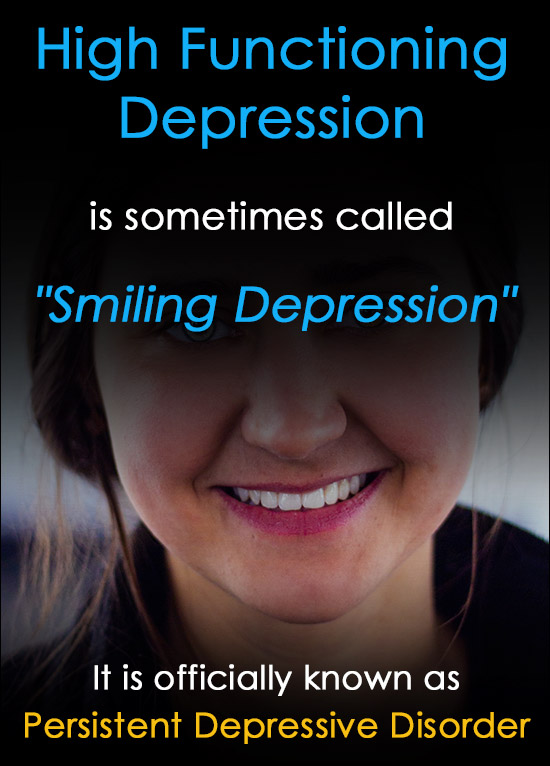

The severity and frequency of symptoms and how long they last will vary depending on the individual and his or her particular illness. Several persistent symptoms in addition to low mood are required for a diagnosis of major depression, but people with only a few – but distressing – symptoms may benefit from treatment as well. Some people experience only a few symptoms while others may experience many. Not everyone who is depressed experiences every symptom. Suicide attempts or thoughts of death or suicide.Aches or pains, headaches, cramps, or digestive problems without a clear physical cause that do not ease even with treatment.Thoughts of death or suicide, or suicide attempts.
 Changes in appetite or unplanned weight changes. Difficulty sleeping, early morning awakening, or oversleeping. Difficulty concentrating, remembering, or making decisions. Decreased energy, fatigue, or feeling "slowed down". Loss of interest or pleasure in hobbies and activities. Feelings of guilt, worthlessness, or helplessness. Feelings of irritability, frustration, or restlessness. Persistent sad, anxious, or “empty” mood. If you have been experiencing some of the following signs and symptoms most of the day, nearly every day, for at least two weeks, you may be suffering from depression: Learn more about getting help and finding a health care provider on NIMH's Help for Mental Illnesses webpage. The Centers for Disease Control and Prevention (CDC) has recognized that having certain mental disorders, including depression and schizophrenia, can make people more likely to get severely ill from COVID-19. But a person with bipolar disorder also experiences manic episodes, or unusually elevated moods in which the individual might feel very happy, irritable, or “up,” with a marked increase in activity level.Įxamples of other types of depressive disorders newly added to the diagnostic classification of DSM-5 include disruptive mood dysregulation disorder (diagnosed in children and adolescents) and premenstrual dysphoric disorder (PMDD). Individuals with bipolar disorder (formerly called manic depression or manic-depressive illness) also experience depressive episodes, in which they feel sad, indifferent, or hopeless, combined with a very low activity level. Depression with symptoms of psychosis, which is a severe form of depression where a person experiences psychosis symptoms, such as delusions (disturbing, false fixed beliefs) or hallucinations (hearing or seeing things that others do not see or hear). Seasonal affective disorder, which comes and goes with the seasons, typically starting in late fall and early winter and going away during spring and summer.
Changes in appetite or unplanned weight changes. Difficulty sleeping, early morning awakening, or oversleeping. Difficulty concentrating, remembering, or making decisions. Decreased energy, fatigue, or feeling "slowed down". Loss of interest or pleasure in hobbies and activities. Feelings of guilt, worthlessness, or helplessness. Feelings of irritability, frustration, or restlessness. Persistent sad, anxious, or “empty” mood. If you have been experiencing some of the following signs and symptoms most of the day, nearly every day, for at least two weeks, you may be suffering from depression: Learn more about getting help and finding a health care provider on NIMH's Help for Mental Illnesses webpage. The Centers for Disease Control and Prevention (CDC) has recognized that having certain mental disorders, including depression and schizophrenia, can make people more likely to get severely ill from COVID-19. But a person with bipolar disorder also experiences manic episodes, or unusually elevated moods in which the individual might feel very happy, irritable, or “up,” with a marked increase in activity level.Įxamples of other types of depressive disorders newly added to the diagnostic classification of DSM-5 include disruptive mood dysregulation disorder (diagnosed in children and adolescents) and premenstrual dysphoric disorder (PMDD). Individuals with bipolar disorder (formerly called manic depression or manic-depressive illness) also experience depressive episodes, in which they feel sad, indifferent, or hopeless, combined with a very low activity level. Depression with symptoms of psychosis, which is a severe form of depression where a person experiences psychosis symptoms, such as delusions (disturbing, false fixed beliefs) or hallucinations (hearing or seeing things that others do not see or hear). Seasonal affective disorder, which comes and goes with the seasons, typically starting in late fall and early winter and going away during spring and summer. 
Perinatal depression, which occurs when a woman experiences major depression during pregnancy or after delivery (postpartum depression).Persistent depressive disorder (also called dysthymia), which often includes less severe symptoms of depression that last much longer, typically for at least 2 years.Major depression, which includes symptoms of depression most of the time for at least 2 weeks that typically interfere with one’s ability to work, sleep, study, and eat.There are different types of depression, some of which develop due to specific circumstances. To be diagnosed with depression, the symptoms must be present for at least two weeks. It causes severe symptoms that affect how you feel, think, and handle daily activities, such as sleeping, eating, or working. Research Training and Career Development Opportunitiesĭepression (also called major depressive disorder or clinical depression) is a common but serious mood disorder.Research Conducted at NIMH (Intramural Research Program).Upcoming Observances and Related Events.Contribute to Mental Health Research Mobile navigation







 0 kommentar(er)
0 kommentar(er)
